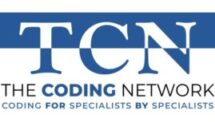Heidi Stout, CPC, COSC, CCS-P
Heidi Stout has over 30 years experience in orthopaedic coding. She is
the director of the orthopaedic surgery division for The Coding Network, LLC, and has her own
consulting business, Coder-On-Call, Inc. Stout has been consulting editor to several medical
coding publications and is a member of the AAPC Orthopaedic Steering Committee. She is a
member of the Monmouth, N.J., local chapter.
Recognize new coding conventions and brush up on your anatomy for proper ICD-10 coding. The demand for specificity in injury coding is tremendous, which places increased demand on the physician to document in detail, and on you to code to a high level of specificity.
Orthopaedic injury coding in ICD-10 is not business as usual. Codes can be up to seven characters long, and are organized by anatomic site rather than by injury type. Codes for post-operative complications are in the body system chapters, and V and E codes are things of the past. What this amounts to is that coders need to know their orthopaedic anatomy when ICD-10 is implemented. To keep from feeling overwhelmed on that fateful day, let’s take a closer look at some of the new ICD-10 coding conventions you may encounter for orthopedic injuries.





